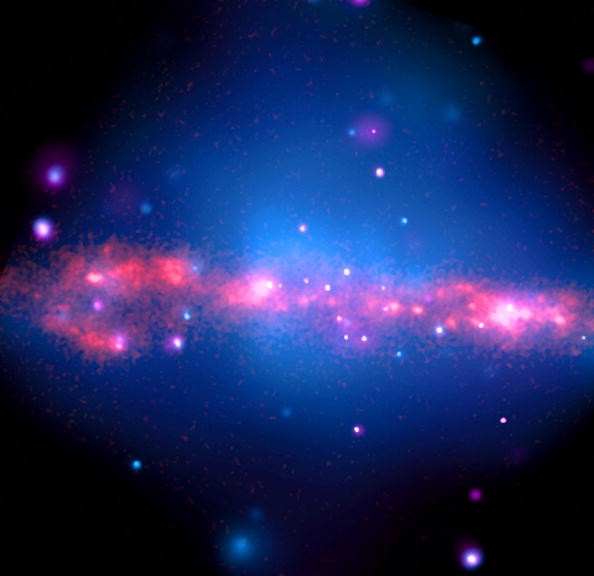Possible Early Formation Of New Galaxy Spotted By Astronomers From Europe
| Janice Teh | | Jul 23, 2015 09:34 AM EDT |
(Photo : Getty Images) A possible formation of a new galaxy was spotted in an observatory in Southern Europe. This will give more insights on how cloud gasses can become a new galaxy.
A team of astronomers from Europe was fortunate enough to witness a possible formation of a new galaxy. Roberto Maiolino led the team of astronomers who have been doing their space observation in Southern Europe. The team was from the Cavendish Laboratory and Kavli Institute for Cosmology at the University of Cambridge in United Kingdom.
Like Us on Facebook
According to NYC News, the Atacama Large Millimeter Array or also called as ALMA, used to spot changes in outer space, was used by Maiolino and his team. The ALMA is a highly sophisticated device that serves as an astronomical interferometer of radio telescopes.
ALMA is made possible because of an international partnership among the USA, East Asia, Chile, Canada and Europe. It costs about $1.4 billion and is currently the most expensive of its kind in operation. The ALMA was aimed at galaxies that are younger than our very own Milky Way, which was formed 800 million years after the big bang happened.
There were gas clouds that have been detected which could possibly form stars or a new galaxy. These gas clouds will be further observed to fully understand how galaxies were formed. It would be interesting to see how the very first galaxies cleared away hydrogen gas fogs, a period which has been called as "reionization." Until now, the observations made here in planet Earth were simply described as "faint blobs." This was according to a report made by the Echo Examiner.
Maiolino and his team mainly had their observations by using the ALMA which was at the European Southern Observatory or ESO. His team at ESO was dumbfounded to find that the faint glows they originally observed will become either a new star or a new galaxy. However, most of their observations were indicating that these faint glows are more likely to become a new galactic formation.
According to Slash Gear, the glows are possibly ionized carbon that came out from a cloud of gas. The team of astronomers also wanted to find out more on the interaction between a group of stars of a younger generation and the cold clumps that could possibly become a galaxy. This study is significant to detect how glowing carbons one billion years after the big bang could became a host of planets.
TagsSpace, space observatory, european space agency, european space observatory, galactic formation, ESO, Galaxy
©2015 Chinatopix All rights reserved. Do not reproduce without permission
EDITOR'S PICKS
-

Did the Trump administration just announce plans for a trade war with ‘hostile’ China and Russia?
-

US Senate passes Taiwan travel bill slammed by China
-

As Yan Sihong’s family grieves, here are other Chinese students who went missing abroad. Some have never been found
-

Beijing blasts Western critics who ‘smear China’ with the term sharp power
-

China Envoy Seeks to Defuse Tensions With U.S. as a Trade War Brews
-

Singapore's Deputy PM Provides Bitcoin Vote of Confidence Amid China's Blanket Bans
-

China warns investors over risks in overseas virtual currency trading
-

Chinese government most trustworthy: survey
-

Kashima Antlers On Course For Back-To-Back Titles
MOST POPULAR
LATEST NEWS
Zhou Yongkang: China's Former Security Chief Sentenced to Life in Prison

China's former Chief of the Ministry of Public Security, Zhou Yongkang, has been given a life sentence after he was found guilty of abusing his office, bribery and deliberately ... Full Article
TRENDING STORY

China Pork Prices Expected to Stabilize As The Supplies Recover

Elephone P9000 Smartphone is now on Sale on Amazon India

There's a Big Chance Cliffhangers Won't Still Be Resolved When Grey's Anatomy Season 13 Returns

Supreme Court Ruled on Samsung vs Apple Dispute for Patent Infringement

Microsoft Surface Pro 5 Rumors and Release Date: What is the Latest?










